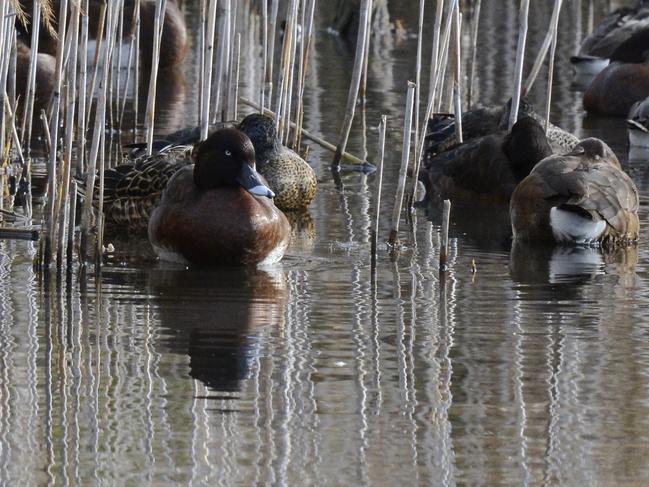Talking Point: Waterbirds are escaping mainland drought — so don’t shoot them
ERIC WOEHLER: Shooting season starts as Tasmania becomes a refuge for drought-stricken waterbirds

Opinion
Don't miss out on the headlines from Opinion. Followed categories will be added to My News.
THE attraction of spending time in Tasmania by visitors from the mainland is not confined to people at the moment.
The current mainland drought conditions have seen an influx of mainland ducks into Tasmania.
This wave of Freckled Duck, Hardheads and Pink-eared Duck is unequivocal evidence of trans-Bass Strait movement into Tasmania as far south as the South-East of the state.
We don’t know how many ducks have flown across Bass Strait, but with widespread reports from around Tasmania of mainland species, it is clear the numbers must be in the thousands.
When the ducks arrive in Tasmania, they disperse widely, dropping onto farm dams, rivers, coastal lagoons and wetlands statewide. They are virtually impossible to count when they are here, so we will never know the true extent of the trans-Bass Strait movement.
Tasmania has escaped the worst of the current drought conditions on the mainland, with our wetlands, waterways and farm dams still holding water at levels greater than on the mainland.
Ash and soot from the widespread bushfires on the mainland have further reduced the suitability of wetlands and waterways to support waterfowl. The recent rainfall from ex-tropical Cyclone Esther will ease conditions in some parts of the mainland, but mainland water storages will take much more rain to recover after years of record-breaking drought following years of well-below rainfalls.
Australia’s waterfowl are dispersive rather than migratory as is the case in many parts of the Northern Hemisphere.
Rather than regular, annual migration routes from point to point, Australia’s waterfowl follow the presence of water, an adaptation to living on the driest continent on Earth (other than the Antarctic).

There would be no point in migrating to a site when there is no water present, so our waterfowl have evolved the alternative strategy of dispersing rather than migrating, which allows them to survive droughts for which Australia is renowned.
Surveys of mainland waterways and wetlands since the early 1980s have documented large-scale decreases in waterbird abundances and in species diversities related to water levels and changing land use patterns in southeast Australia.
Some of the waterways around Australia are Ramsar-listed, indicating that these sites are internationally significant wetlands, contributing to the conservation of global biodiversity. Tasmania is fortunate to have 10 of the 61 Ramsar wetlands identified nationally.
While the visiting mainland species are not permitted to be shot, we know that many non-target species of waterbirds are shot and injured during the Tasmanian duck season — Black Swans, White-faced Herons and other species of ducks are often caught in the crossfire. Rather than shooting these mainland refugees, there should be a moratorium on all duck shooting in Tasmania to ensure the protection of mainland birds and to allow local populations to recover.
When, or perhaps more realistically, if, mainland waterways recover sufficiently to support their abundant and diverse waterfowl, our visitors will quietly return to the mainland and resume their lives there.
We cannot rely on dated, current practices and vague claims of “sustainability” in support of duck shooting in Tasmania.
Shooting ducks may have been “a way of life” in the 18th and 19th centuries, but there is no place for it in 21st century Tasmania.
Predictions of the future impacts of climate change in Australia are of longer, drier summers and can only exacerbate the already perilous situation for Australia’s waterways and the waterbirds that depend on them. Tasmania is already recognised as a refuge for mainland waterfowl, and this critical role will only increase in the future as mainland waterways and wetlands receive less rain.
The new normal of longer summers, extended droughts and the subsequent increased role of Tasmania as the national refuge for mainland species of waterbirds underlines the need for a national approach to managing and conserving these species, rather than the current ad hoc, state-based approach that is failing.
Dr Eric J. Woehler is convener of BirdLife Tasmania.


